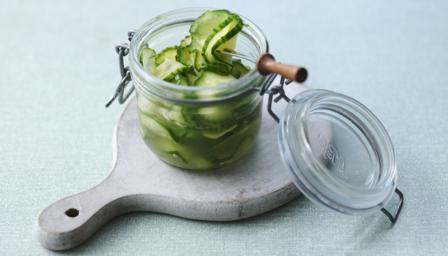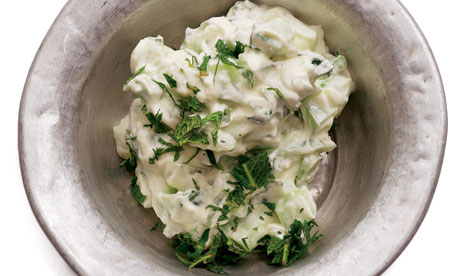otago farmers market mobile kitchen menu
 Autumn for us hardy southerner's doesn't necessarily mean end of tomatoes, stone fruit or berries. Actually summer produce for has only just arrived! Corn is a great example it has been available up north for quite some time and we are only sinking our teeth into it now. Broccoli and cauliflower are firm and crisp, beans are available in many varieties and those vibrant little orange Bushfire pumpkins which i love so much for their flavour, texture and versatility. Kohlrabi is available at Wairuna Organics and i will be turning it into a crisp, refreshing salad. Rosedale's fresh corn will be combined with creamy white beans and Waitaki Bacon and Ham's pork ribs go perfectly with them.
Autumn for us hardy southerner's doesn't necessarily mean end of tomatoes, stone fruit or berries. Actually summer produce for has only just arrived! Corn is a great example it has been available up north for quite some time and we are only sinking our teeth into it now. Broccoli and cauliflower are firm and crisp, beans are available in many varieties and those vibrant little orange Bushfire pumpkins which i love so much for their flavour, texture and versatility. Kohlrabi is available at Wairuna Organics and i will be turning it into a crisp, refreshing salad. Rosedale's fresh corn will be combined with creamy white beans and Waitaki Bacon and Ham's pork ribs go perfectly with them. 
I will be going through the techniques of bottling, and peaches are the chosen fruit for today. This is such an easy technique and one I would highly recommend as it is hugely satisfying having your own juicy, locally grown fruit available.
FRESH CORN, BEANS AND PARSLEY
Local corn has arrived and when combined creamy white beans and fresh parsley it makes for a wonderfully fresh alternative to any meal.
Serves 4
1 Tbsp oil
1 Tbsp butter
1 white onion, sliced thinly
2 cloves garlic, sliced thinly
2 cobs fresh corn, kernels removed
1 420g tin butter beans or cannellini, drained, rinsed and drained again
1 green mild chilli, deseeded and sliced thinly
½ stock cube, veg or chicken
Salt and freshly ground pepper
Handful fresh parsley (I like flat leaf) roughly cut
Method
Heat a medium-sized heavy based fry pan up to a moderate heat with the oil and butter. Once the butter has melted add the onion and cook until softens and sweetens (4 minutes).
Whilst the onion is cooking, peel the corn and with a large knife run the blade away from you down the cob of corn. This can get messy as the corn is so juicy (I often clear out my sink and place a bowl in it and do it over that). Once you have removed the kernels off the cob add them to the pan with the onions, add the garlic and chilli cook for 2 minutes. Add the drained beans, and ½ cup of either water or stock, stir to combine and season well. Turn down the heat and let it bubble away to thicken and for the flavours to mature.
Add the parsley and cook for a minute more, taste and adjust if necessary.
It goes well with grilled chicken, pork chops or fish or quite simply a good green salad.
PICKLED CUCUMBERS

makes 2-3 medium sized jars
3 cucumbers
2 onions, peeled and halved
about 80g salt
500ml cider or malt vinegar
350g sugar white or brown
4 teaspoons mustard seeds
1 Tbsp chopped fresh dill
1/2 tsp peppercorns
Method
Slice the cucumbers and onions very thinly (a mandolin is ideal for this). Layer them in a bowl, sprinkling with the sea salt as you go, then weigh them down with a plate and leave for a few hours or overnight. Drain off the liquid, rinse the vegetables well and drain in a colander.
Combine the vinegar, sugar, mustard seeds, and peppercorns in a pan and bring slowly to the boil, stirring to dissolve the sugar. Add the well-drained cucumber and onion mixture and bring back to the boil for 1 minute, add the dill. Transfer the mixture to sterilised jars, using a slotted spoon. Bring the liquid back to the boil and simmer until slightly reduced for about 15 minutes, then divide it between the jars, filling to the brim. Put on the lids and label. The pickle will keep for several months.
TZATZIKI - CUCUMBER

Makes 300ml (1 small bowl) 300 ml thick Greek yoghurt 2 cloves garlic 1 medium-sized cucumber, cut in half and seeds removed 2 Tbsp extra virgin olive oil Pinch salt 1 tsp red wine vinegar
Method Put yoghurt into a bowl, crush garlic to a smooth paste with a little salt (mortar and pestle is good for this). Add to the yoghurt and mix through. Grate the cucumber and squeeze out excess liquid (the dryer the better). Add to the yoghurt mixture along with 1 Tbsp of the olive oil, red wine vinegar and salt, taste and adjust if necessary. Store in the fridge until required. Serve in a small dish drizzled with the remainder oil and plenty of flatbreads, and crudities’.
KOHLRABI SALAD

Kohlrabies available from Wairuna Organics
Serves 4
3 medium kohlrabi
80g Greek yoghurt
80g soured cream
1 small garlic clove, crushed
1 ½ tsp lemon juice
1 Tbsp olive oil
2 Tbsp finely shredded fresh mint
20g watercress
¼ tsp sumac
Salt and white pepper
Method
Peel the kohlrabies, cut into 1.5 cm dice and put in a large mixing bowl. Set aside and make the dressing.
Put the yoghurt, soured cream, garlic, lemon juice and olive oil in a medium bowl. Add ¼ teaspoon of salt and a healthy grind of pepper and whisk well. Add the dressing to the kohlrabi, followed by the fresh and dried mint and half the watercress. Gently stir and place on a serving dish. Scatter the remaining watercress on top and sprinkle with sumac.
WAITAKI’S PORK RIBS
Serve 4
At least four ribs each
Rub
1 cup packed brown sugar
2 Tbsp salt
2 tsp sweet smoked paprika
2 tsp cayenne pepper
2 tsp garlic powder
1 tsp ground allspice
¼ tsp chilli flakes
Method
Place the bones into a large pot suitable to hold the bones, cover with cold water and bring to the boil. Cook for 10 minutes and then drain and cool.
Meanwhile combine all of the rub ingredients in a medium bowl.
Line a baking tray with greaseproof paper or tin foil (it will make it a lot easier to clean).
Rub the spare-ribs on all sides with the spice rub. Put on the baking sheet and warp in cling film. Refrigerate for at least 2 hours or ideally as long as possible.
Preheat either your BBQ or grill on your oven to medium- hot as you are wanting to get that wonderful grilled, smoky caramelized look and taste. Place the ribs onto or under the hottest part of the grill and cook for 2 minutes, turn the ribs cook for another 2 minutes.
Now turn the oven to 190C on bake for at least 30 minutes to 1 hour, you want the bones to be tender almost to the point where the meat is about to fall from the bones.
Serve and enjoy!
BOTTLED PEACHES
Bottling is a method of preserving food in sealed jars.
This is the time of the year when you should make the effort and get comfortable with bottling your own fruit. My mother always had cupboards upon cupboards of bottled fruit and we would use them for breakfast, lunch and dinner and in winter when varieties are limited they make for a welcome addition to your table.
This method is one my mother showed me and it works a treat. This method will save you time and it really does take any worry away from bottling.
HELPFUL TIPS
Guide to amount of syrup required
PRESERVING JAR WHOLE FRUIT FRUIT HALVES
1 litre 2 cups 1 ½ cups
500ml 1 ¼ cups ¾ cup
Fruit can be packed in syrup or water. Syrup will give better colour and depth of flavour. Make the syrup before preparing the fruit. Dissolve the sugar in water then bring to the boil.
SYRUP – 1 cup sugar to 2 cups water will make a medium syrup and works well with most fruit.
Firstly wash your jars and lids well in hot soapy water and rinse under hot water, dry upside down in warm oven 50C. Place the lids in a small pot with water and bring to the boil for at least 5 minutes. Turn off and set aside.
Place all your ingredients for your syrup in medium size pot and bring to boil.
Prepare your fruit by cutting it in half and removing the stone, I cut my peaches into quarters which worked well as some of the fruit didn’t remove easily from the stone. Once all the peaches are prepared place into hot syrup and bring to a gentle rolling boil. Cook for about 5 -10 minutes or until the fruit is just tender. Remove from the heat.
Carefully place your jar on a plate and spoon the peaches into it getting as full as possible. Now carefully pour over they syrup so that it overflows, this will prevent any fruit from being exposed. Remove the hot lid from the water and place on top of the jar and if using a screw top secure tightly. Wipe the jars with hot soapy water and dry.
Label with date and item and keep away from direct sunlight. An indication when these have preserved correctly the lid will draw down in the center. They will keep for 6-12 months.
ALISON WOULD LIKE TO THANK THE FOLLOWING VENDORS FOR THEIR OUTSTANDING PRODUCTS
WAITAKI BACON AND HAM – pork bones
ROSEDALE ORCHARD – fresh corn and peaches
WHITESTONE CHEESE – goat’s feta
KAKANUI PRODUCE – soil grown cucumbers, tomatoes and chilli
WAIRUNA ORGANICS – kohlrabi
CAITHNESS ORCHARD – tatura peaches and more
GILBERTS FINE FOOD (LIEVITO BAKERY) – fresh baked bread
GREEN MAN ORGANIC BEER – organic beer




